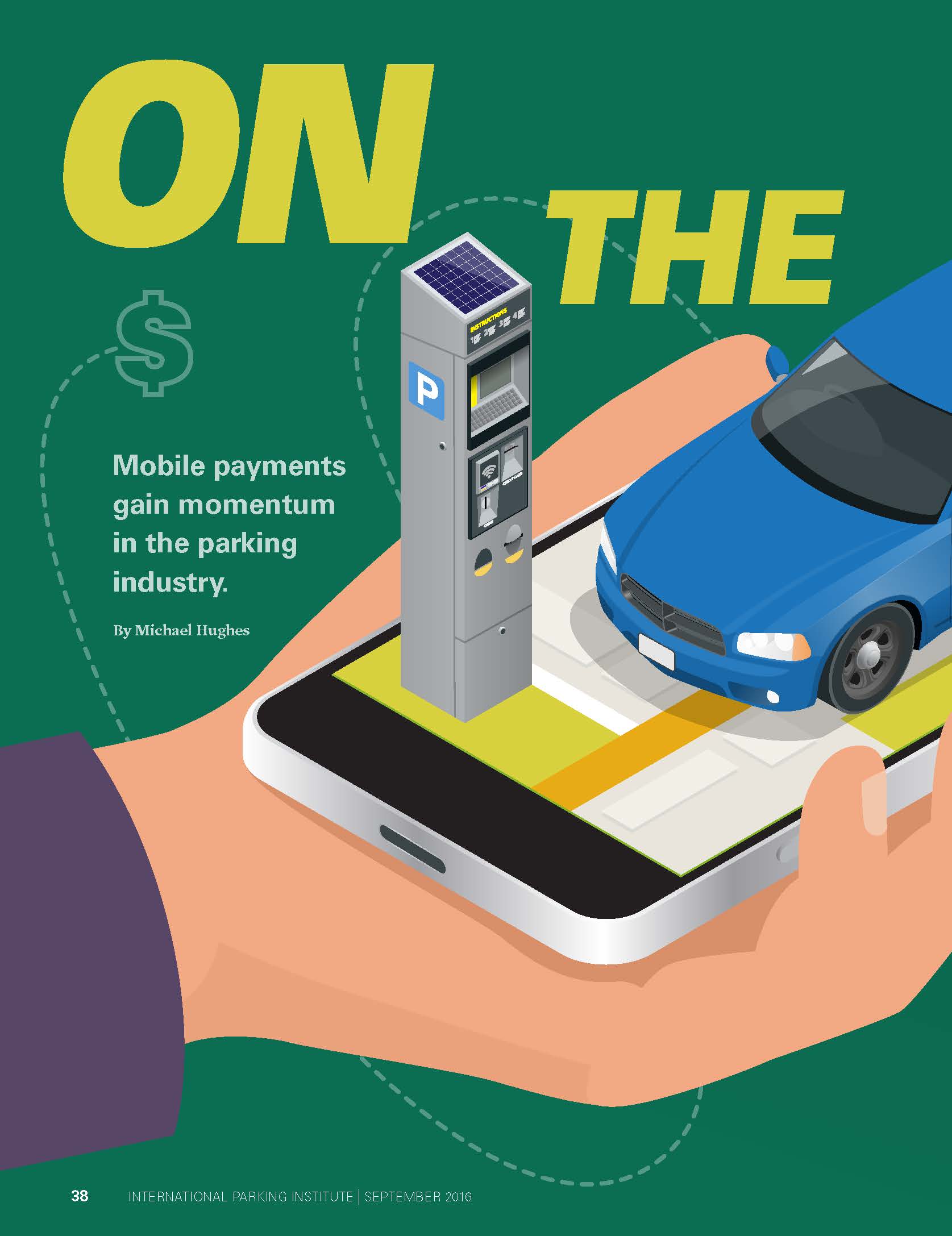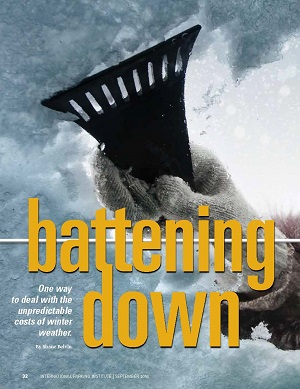On the Go
Mobile payments gain momentum in the parking industry.
The parking industry has greatly evolved in recent years with the introduction of new and  better technologies. Even well into the 1990s, some parking garages used cigar boxes to accept payments—consumers simply dropped cash into the box and parked their vehicles.
better technologies. Even well into the 1990s, some parking garages used cigar boxes to accept payments—consumers simply dropped cash into the box and parked their vehicles.
But today paints a different picture with countless options available to consumers looking for a convenient way to find and pay for a parking spot. In a world of on-demand services through the use of apps, drivers can quickly find a parking spot and pre-pay to reserve it with the click of a button. Some mobile apps allow consumers to pay for a parking meter and refill the meter remotely, without ever needing to revisit the physical space where a car is parked. Indeed, today’s consumer has come to expect convenience and efficiency in every aspect of his or her life, including how and where he or she parks a vehicle.
The Opportunity
Mobile technology is a significant driver of this shift and increasingly popular among parking providers. However, consumers have been slow to adopt mobile payments. In North America, 52 percent are extremely aware of mobile payments, but only 18 percent are using them on a regular basis, according to a recent Accenture survey.
As the U.S. transitions to a Europay-Mastercard-Visa (EMV) system and more retailers begin to accept chip card and near-field communications (NFC) transactions, it’s anticipated that consumers will be more motivated to adopt mobile payments. In fact, research shows that by 2017, mobile payment users are projected to reach 50.2 million, up from 37.5 million in 2016. In time, mobile will come to be expected across industries for the speed, convenience, and security it offers consumers.
An added layer of security that operators can implement is end-to-end encryption, ensuring that clear text account data are never released into the merchant’s environment. For example, the Visa Digital Enablement program provides Visa issuers with streamlined access to its token service and to future wallet providers of the issuer’s choice without the need to directly contract with them. This will work to minimize the risk of fraudulent use of accounts if the device or account is compromised.
In Canada, 75 percent of major retailers accept contactless payments compared to fewer than 2 percent in the U.S. This is in large part because Canada rolled out chip cards and contactless payments concurrently, allowing consumers to adopt the technologies much more quickly. The mass adoption of mobile north of the border is indicative of the tremendous growth the U.S. can anticipate to experience when more merchants implement EMV and NFC-capable terminals.
Why Mobile Matters
Currently, there are a variety of mobile payments options coming to market at once—Apple Pay, Samsung Pay, Google Wallet—and while it’s unclear which industry player will come out on top, it’s a matter of time before mobile payments become second nature. There are several benefits to consider when contemplating launching mobile payments in markets that haven’t yet:
Increased convenience. Many garages require a customer to pay at a separate terminal located in a vestibule to get a ticket confirming payment. From there, the customer can return to his or her vehicle and exit the garage using the ticket to open the gate. With the ability to accept credit cards and mobile payments right at the point of exit, customers are able to remove an extra step and immediately pay at the gate, drive, and go. With the tap of a smartphone and no signature required, mobile provides a convenient and efficient way to pay. This is a strategic advantage for operators in a sector in which customer turnaround is high, time is at a premium, and lines can build quickly. While the time and cost it takes to implement mobile contactless technologies is significant, those who make the switch to mobile will be ahead of the curve.
Build customer loyalty. Starbucks is a perfect example of a company that is leveraging mobile to expand its customer base and increase foot traffic in its stores. With the wave of a smartphone, customers are able to quickly pay for their latte at the checkout counter. The mobile app also allows users to order ahead of time, reducing wait times and lines. Further, customers continue using the app because they have the opportunity to earn incentives, such as discounts or free coffees. The app has been such an effective sales tool that in its first fiscal quarter of 2015, the company said it had more than 13 million mobile users in the U.S., up from 12 million reported in October. Parking operators have a similar opportunity and can use apps to build a loyal following of customers.
Boost your bottom line. As more consumers adjust to using an NFC-enabled mobile device, it will begin to be the preferred method of payment due to its many advantages. But what about advantages to the parking operator? More frequent use creates a top-of-wallet card for everyday purchases, and according to a MasterCard study, researchers found a clear correlation between contactless adoption and preference for a particular card, demonstrating that a contactless payments solution may help drive top-of-wallet behavior. Research also shows that consumers spend more using contactless cards, which could ultimately increase revenues.
Make every transaction more secure. Together, tokenization and mobile wallets offer consumers added protection from exposed sensitive card data. Point-to-point contactless applications remove parking operators from PCI/PA-DSS scope and help to reduce the risk of a breach or fraudulent charge.
Attract tourists. With global interoperability, NFC-enabled mobile devices can benefit frequent travelers, who can use familiar capabilities in a foreign city. This too will help to drive a higher spend and generate more sales.
Mobile payments may still be slow to catch on in the U.S., but the recent EMV liability shift is sure to transform the way consumers pay across industries. If parking operators want to be able to stay ahead of competition and demonstrate to customers that they’re adapting to the latest technologies, mobile payment solutions are an option to consider.
MICHAEL HUGHES is manager, North American strategic partner sales at Moneris Solutions. He can be reached at michael.hughes@moneris.com.

